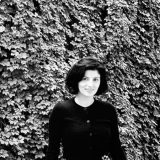Before approaching an art gallery be sure that you have done your homework well. First, check that your goals, aspirations, and intentions are compatible with the gallery’s agenda. Be present at as many openings of the respective gallery as possible. Talk to the artists represented by the gallery and ask them for advice that might be useful in preparing for the interview.
After you have passed the research stage, simulate an interview with a close friend or a parent and, in the end, ask them if they have any questions, if there were things that they did not understand or if they managed or not to follow you with interest throughout the presentation. Once you have identified the strengths and weaknesses of your presentation, try to improve your speech so that you can make it as clear and attractive as possible.
Set up the artist portfolio in digital and printed format. It is important to choose with great care the most successful works, works that highlight your evolution and artistic skills. Order the visual material first, chronologically, and then you can add other helpful filters such as technique and/or topic. Thus, during the interview, you will be able to easily show works from each stage of creation. In addition, the gallerist who will go through the portfolio again, but in your absence, will be able to follow and understand your artistic path much easier.
Review the artist statement. Emphasize those aspects that are compatible with the vision of the gallery. You can learn more about the gallery by asking other artists who are represented or have collaborated with that gallery in the past. You can also get the information you need by navigating the gallery’s website.
Check your CV. If you are a young artist at the beginning of the road, make sure that you have listed in your CV all the activities, contests, scholarships, residencies, and group exhibitions in which you participated. If you are an experienced artist, keep in your CV only the most important exhibitions, biennials, and art fairs you have taken part in.
The cover letter includes the reason why you want to be represented by the gallery and the benefits you can bring. Identify areas less covered by the gallery and try to see if you can fill them in and bring value.
Schedule the interview either by calling or by going directly to the gallery. If you are unable to set up an interview, ask a common acquaintance to recommend you to the gallery. If none of these variants work, you can make a bold gesture. Send by courier, to the attention of the Gallery Director, an envelope containing both in printed and digital format, the artist portfolio, the artist statement, the CV and the cover letter, and, why not, a sample of your creation: a sketch, a photo, a small sculpture, or anything else created by you that reflects your artistic practice.
Day of the interview. If you feel very tense on the day of the interview try to do 10-15 minutes of physical exercise. It will help you relax. Pay close attention to personal hygiene and clothing. Arrive at the interview 15 minutes before the scheduled time. Once you arrive at the gallery, keep calm. Take a deep breath if you feel agitated. Be friendly. You may have to wait. Remember that it was you who requested this interview and be grateful.
During the interview it is important to answer the questions with a lot of calm and confidence, avoiding deviating from the topic. Usually, at the end of the interview, the interviewee is asked if he wants to ask any questions. Attention! It is a trap question. You do not have to, under any circumstances, answer with a simple No. Impossible not to have a question about the gallery’s activity, about the expectations that the Gallery has from the artist it represents, about the way of working once the artist enters the gallery’s portfolio (how many exhibitions are given per year, how often he is visited in the studio, he is suggested a certain theme or approach to the theme, attendance at fairs). These are questions that can help you find out if you can collaborate and respect the gallery agenda without feeling any pressure or without having to make compromises.
At the end of the interview, you will thank them for their time and you will invite them to your studio. Leave a copy with your artist portfolio and make sure you have passed your contact details. You can also ask how long it will take for you to receive an answer.
Follow-up. Do not get discouraged if you do not get an answer in a few days. It is an important decision for the Gallery as well. Wait for around 7-10 days to pass. If you do not receive a response during this time, you can contact the gallery by phone or email. Think ahead of a short presentation in which to insert, if you can, something memorable during the interview you had, so that they can recognize you more easily.
Do not demotivate yourself if you are not accepted by the gallery, neither after the first attempt nor after the next dozens of unsuccessful attempts. Stay positive and find other opportunities for representation or displaying.




